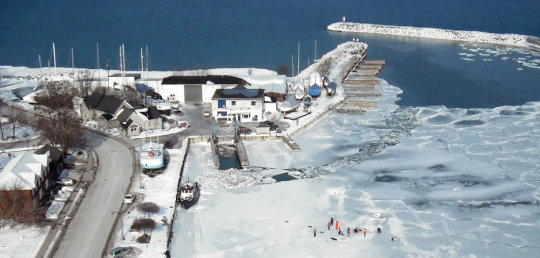Staff

Grey County Ontario Provincial Police (OPP) say they are not in a position to declare ice conditions safe. Ice is never 100 percent safe as it can change dramatically in response to weather and water conditions. Grey County OPP can, however, urge that the public practise proper ice safety.
Ice safety and weight-bearing properties of ice can be affected by many factors, including thickness, currents, age of the ice, pressure cracks and snow cover. Ice conditions can change dramatically.
Almost all recreational activities involve some risk. Grey County OPP encourage everyone to assess and manage the risks of their recreational activities so they can enjoy the outdoors.
Children should not play on or near ice-covered bodies of water unless supervised by an experienced, safety-conscious adult who is familiar with local conditions and currents.
Proper use of safety equipment can reduce the risks of travelling over ice-covered bodies of water. Possibilities include: wearing of survival suits, carrying picks (used to grip ice to pull yourself out of the water), and carrying a rescue rope.
For further information on ice safety from the Royal Lifesaving Society, visit www.lifesavingsociety.com/who’s-drowning/ice-safety.
Safety tips if you are considering venturing out on ice-covered water:
-
Check the weather. Avoid ice-related activities on warm or stormy days.
-
Check ice conditions. The Lifesaving Society recommends a minimum ice thickness of 10 cm (4 inches) for a single person to walk, ice fish, or cross-country ski on.
-
Avoid vehicle travel on ice.
-
Never go onto the ice alone. A buddy may be able to rescue you or go for help if necessary.
-
Wear a thermal protection buoyant suit to increase your chances of survival should you go through the ice.
-
Carry ice picks, an ice staff, rope, and a cell phone with you.
-
Do not drink alcohol or consume other drugs. Alcohol/drugs impair judgment and reduce your body’s ability to stay warm in cold conditions.











